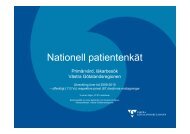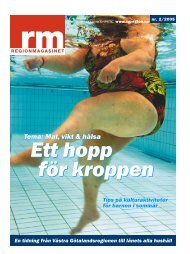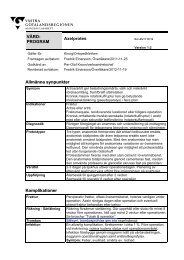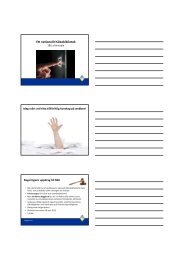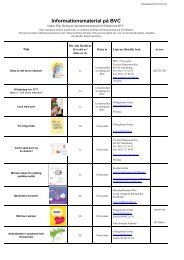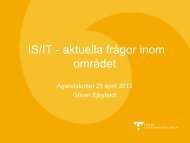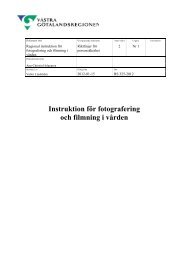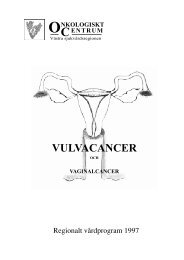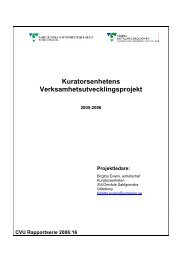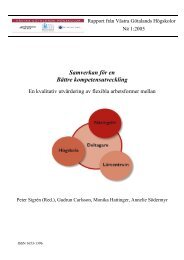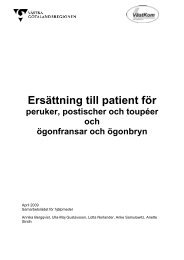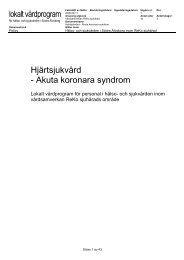FOURTEENTH ANNUAL EUROPEAN PRESSURE ULCER ...
FOURTEENTH ANNUAL EUROPEAN PRESSURE ULCER ...
FOURTEENTH ANNUAL EUROPEAN PRESSURE ULCER ...
Create successful ePaper yourself
Turn your PDF publications into a flip-book with our unique Google optimized e-Paper software.
Thursday September 1st<br />
Proceedings of the 14th Annual European Pressure Ulcer Meeting<br />
Oporto, Portugal<br />
Epidemiology, Diagnosis and Management of Infected Chronic Wounds<br />
A.A.L.M. Rondas 1 , J.G.M.A. Schols 2 , RJ.G. Halfens 3 , E.E. Stobberingh 4<br />
1 De Zorggroep, Venlo, The Netherlands. Email: a.rondas@maastrichtuniversity.nl, 2 FHML-department<br />
General Practice, Maastricht University, The Netherlands. 3 Department of Health Care and Nursing<br />
Science, School for Public Health and Primary Care, Maastricht University, The Netherlands. 4 Academic<br />
Medical Centre, Maastricht, The Netherlands.<br />
Introduction<br />
Chronic wounds affect more than 1% of the U.K.<br />
population and cost society at least ₤1 billion per year<br />
[1], so the costs, both financial and emotional are high.<br />
At this moment there are no data on the number and<br />
costs of chronic wounds in the Netherlands.<br />
Although an accurate history may help to determine the<br />
initial etiology of a chronic wound, chronicity of dermal<br />
wound healing is often related to secondary factors such<br />
as infection or vascular insufficiency [2]. Chronic<br />
wounds contain a bacterial load that is different from the<br />
load found in acute, potentially contaminated, surgical<br />
and traumatic wounds [3]. In chronic wounds the signs<br />
of local infection and even systemic infection can be<br />
subtle or misleading. Therefore, already in1969, Robson<br />
proposed bacterial quantification as a potential<br />
technique to diagnose infection [4]. This strategy,<br />
however, has evolved into the excessive and<br />
indiscriminative tendency to culture chronic wounds,<br />
under the false hope that this will identify underlying<br />
infection. Wound cultures mostly will be positive and this<br />
finding subsequently has led to further promoting this<br />
false belief [5]. Moreover, this has invariably fostered<br />
the use of systemic broad-spectrum antibiotics with the<br />
associated risk of antibiotic resistance. The PhD study<br />
that will be presented, examines the number of<br />
(infected) chronic wounds in the Netherlands. Following<br />
the review of the literature on obtaining a culture<br />
specimen of a chronic wound, a more targeted and<br />
efficient method for wound culturing will be presented.<br />
Finally, the PhD study aims to validate the clinical<br />
symptoms of infected chronic wounds as published in<br />
the international guidelines of EWMA and WUWHS [6,<br />
7].<br />
Methods<br />
Following the methodology of the Dutch National<br />
Prevalence Measurement of Care problems (LPZ) [8],<br />
the prevalence of (infected) chronic wounds will be<br />
assessed via a specifically developed module on<br />
(infected) chronic wounds which recently has been<br />
pilot tested. A systematic review has been conducted<br />
on the method to obtain in a validated way a culture<br />
specimen of an infected chronic wound. An empirical<br />
study will be performed to assess the clinical<br />
symptoms of an infected chronic wound [7].<br />
Additionally, the symptoms mentioned in the current<br />
international standards [6,7] will be validated by taking<br />
a swab and a biopsy of the wound at the same time.<br />
63<br />
Results<br />
The following preliminary results will be presented:<br />
1. The prevalence of (infected) chronic wounds as<br />
assessed in the pilot study together with data on the<br />
feasibility of the newly developed LPZ module.<br />
2. The results of the systematic review on obtaining<br />
culture specimens of an infected chronic wound.<br />
3. The design of the planned empirical study on<br />
validating the symptoms mentioned in the current<br />
international standards.<br />
Discussion<br />
The total research project will further reveal the clinical<br />
relevance of infected chronic wounds and related to<br />
this the importance of an adequate strategy to manage<br />
them. Clear clinical and relevant microbiological<br />
confirmation of the presence of infection of a chronic<br />
wound is crucial for targeting an effective and efficient<br />
intervention, and to prevent the current practice of<br />
often unnecessary prescription of antibiotics.<br />
Clinical relevance<br />
When the clinical diagnosis of infection of chronic<br />
wounds is made more accurately, it is conceivable that<br />
the actual arbitrary practice of prescribing antibiotics<br />
will reduce, and that the problem of antibiotic<br />
resistance may decrease.<br />
Conflict of Interest<br />
None.<br />
References<br />
[1] Thomas DW, Harding KG. Wound healing. British Journal of<br />
Surgery 89:1203-1205, 2002.<br />
[2] Mostow EN. Diagnosis and classification of chronic wounds.<br />
Clinics in Dermatology 12:3-9,1994.<br />
[3] Bowler PG. The 10 5 bacterial growth guideline: reassessing its<br />
clinical relevance in wound healing. Ostomy & Wound Management<br />
49:44-53, 2003.<br />
[4] Robson MC, Heggers JP. Bacterial quantification of open<br />
wounds. Military Medicine 134:19-24,1969.<br />
[5] Bowler PG, Duerden B, Armstrong D. Wound microbiology and<br />
associated approaches to wound management. Clinical<br />
Microbiology Reviews 14:244-68, 2001.<br />
[6] European Wound Management Association. Position Document:<br />
Identifying criteria for wound infection London: Medical education<br />
Partnership Ltd., 2005.<br />
[7] WUWHS: Infection. Principles of Best Practice Wound infection<br />
in clinical practice. An international consensus. London: MEP Ltd.,<br />
2008.<br />
[8] Halfens RJG, Meijers JMM, Du Moulin MFMT, van Nie NC,<br />
Neyens JCL,Schols JMGA. Rapportage resultaten Landelijke<br />
Prevalentiemeting Zorgproblemen. Maastricht: Datawyse/<br />
Universitaire Pers Maastricht, 2010.<br />
Copyright © 2011 by EPUAP



